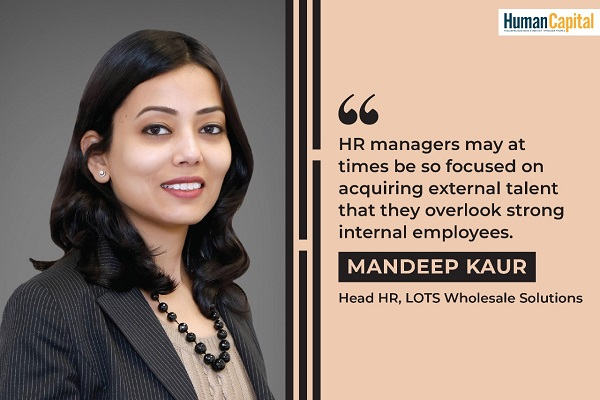The pandemic and its unprecedented challenges have shown that conventional approaches to succession planning fall short of what is needed now and in the post-pandemic era.
Until a few years ago, succession planning was primarily limited to executive-level positions in large organisations. According to ATD (Association for Talent Development) research, only 35% of organisations had a formalised succession planning process in 2019. Then came 2020, with its unprecedented challenges that demonstrated that such an approach to this crucial subject is no longer viable.
Succession planning in volatile times
The pandemic has brought about unprecedented global uncertainty. It has not only impacted economic activity but also created an unparalleled health crisis. As COVID-19 has proven to be especially dire for the older age group, many senior CXO leaders have succumbed to the virus, while others have been out of action as they recover and re-energise. Furthermore, some leaders and employees want to pause and heal as the situation gets overwhelming to deal with.
All of this — along with the coming of the second and third waves of the outbreak — has brought the war on talent to the forefront with an urgency that most did not anticipate. The pandemic has not only highlighted the importance of succession planning in organisations but also emphasised the need for HR leaders to be more visionary, agile and proactive. Before we get into how HR leaders can effectively undertake succession planning activities, let’s take a quick look at why it’s vital in the given scheme of things.
In the current scenario, I see a sudden rise in demand from business heads and a rush from HR leaders to have succession plans in place. I must emphasise that this is a rather deep subject, and robust succession plans cannot be put in place overnight or in a short time span.
Factors to consider in succession planning
In a nutshell, succession planning is the process of identifying, developing, and nurturing new business leaders who can replace current leaders when the time comes. It is a future-focused strategy that facilitates passing on leadership roles seamlessly. It is an inherent part of business continuity. Just as there are extensive risk management plans for processes, succession planning helps mitigate risks when it comes to people.
As succession planning begins with identifying the key roles that a business must have filled in at all times, one might wonder what defines a critical position in an organisation. You may think that leadership positions are by far the most important ones. However, the answer is not so obvious. There is a need to look beyond the management layer. The process weighs in multiple factors, including the impact on business results, the extent to which position drives revenue, the level of risk if the position remains vacant, the dependency of future business strategies on this position, and so on.
The next step involves developing and nurturing talent. HR managers may at times be so focused on acquiring external talent that they overlook strong internal employees. In volatile times, it is even more critical to manage and track the internal talent base from a business standpoint and know what your resources are and where they reside. On the other hand, employees are motivated to perform better if they know they are being groomed for bigger things.
At a time when evaluating internal talent for critical roles assumes paramount importance, it is only natural that HR and business leaders take a step back and assess the requirements from a fresh perspective to be able to nurture leaders for a better tomorrow (especially now that the expectations from leaders have undergone massive changes). This includes defining the required abilities for those key roles, factoring in new leadership skills needed in remote working culture, and considering essential soft skills during troubled times. It also entails understanding the direction the company wants to take and reinventing roles to achieve those goals.
Dos and don’ts of succession planning
We have established that succession planning can ensure business as usual if a leader decides to take a sabbatical, leave, retire, or unfortunate events such as the pandemic arise. Whether the situation is short-term or long-term, HR leaders need to be ready at all times.
✔ Prepare for different situations
If there is one thing that the pandemic has taught us, it is that anything can happen. HR professionals must take stock of the different scenarios that can play out. For example, a business could completely pivot, a key employee could leave, or a job role could become remote, opening up opportunities for employees across geographies. HR managers need to have a detailed plan ready for each of these scenarios. Additionally, it is critical to cultivate a pipeline of high-potential talent rather than relying on a single person. This allows you to draw the right fit at the right time and quickly fill in roles when needed.
✖ Don’t fall into the pitfalls of succession planning
Succession planning is more than fancy templates. It is about understanding the development needs of each individual and customising the process, rather than taking a ‘one size fits all’ approach. Instead, focus on creating specific competencies for each role to drive your leadership decision-making. While succession plans exist in many organisations, the burden often lies on one person. The responsibility must be shared by business heads, HR heads, and successors to ensure the successful execution of plans.
In closing
Succession planning must take precedence right away. It is the only way to ensure that transitions are smooth, no matter what curveballs get thrown at organisations. HR professionals must ensure that it is a continuous process rather than a knee-jerk reaction. While succession planning is a long and laborious process, the benefits far outweigh the efforts. The effects of the pandemic will be seen for many years after it is over. Hence, it is crucial that not only HR managers but also the entire top management begin thinking long-term and proactively undertake succession planning to develop future-ready leaders.
If there is one thing that the pandemic has taught us, it is that anything can happen.
HR professionals must take stock of the different scenarios that can play out. For example, a business could completely pivot, a key employee could leave, or a job role could become remote, opening up opportunities for employees across geographies. HR managers need to have a detailed plan ready for each of these scenarios. Additionally, it is critical to cultivate a pipeline of high-potential talent rather than relying on a single person. This allows you to draw the right fit at the right time and quickly fill in roles when needed.
Are you comfortable working with dispersed colleagues?
Trending
-
SBI General Insurance Launches Digital Health Campaign
-
CredR Rolls Out 'Life Happens' Leave For Its Employees
-
Meesho Announces 30-Week Gender-Neutral Parental Leave Policy
-
Microsoft Unveils Tech Resilience Curriculum To Foster An Inclusive Future
-
60% Indian Professionals Looking For Job Change Due To COVID: Survey
-
SpringPeople And Siemens Collaborate For Digital Transformation Push
-
86% Professionals Believe Hybrid Work Is Essential For Work Life Balance: Report
-
Almost 1 In Every 3 People's Personal Life Affected Due To Work Stress
-
Meesho Rolls Out Reset And Recharge Policy For Employees
-
80% Of Talent Leaders & Academics Say Pandemic Changed Skill Needs For Youth: Report
-
Hero Electric Rolls Out 'Hero Care' Program For Employees
-
Human Capital In Collaboration With ASSOCHAM Hosts Virtual Conference
-
IKEA India, Tata STRIVE Collaborate To Create Employability And Entrepreneurship Opportunities
-
SAP India, Microsoft Launch Tech Skilling Program for Young Women
-
DXC Technology, NASSCOM Collaborate For Employability Skills Program
-
Lenskart To Hire Over 2000 Employees Across India By 2022
-
Mindtree Launches Learn-and-Earn Program
-
Tata AIA Extends 'Raksha Ka Teeka' To Its Employees
-
Swadesh Behera Is The New CPO Of Titan
-
NetConnect Global Plans To Recruit 5000 Tech Professionals In India
-
Hubhopper Plans To Hire 60% Of Indian Podcasters By 2022
-
Corporate India Needs More Women In Leadership Roles: Report
-
Aon to Invest $30 Million and Create 10,000 Apprenticeships by 2030
-
Tech Mahindra Launches ‘Gift a Career’ Initiative for Upskilling of Youth
-
40% Women Prefer Flexible Working Options in Post-COVID World: Survey
-
3 out of 4 companies believe they can effectively hire employees virtually: Report
-
Vodafone , CGI and NASSCOM Foundation launch digital skills platform
-
Odisha: Bank, postal employees to deliver cash for elderly, differently-abled persons
-
Skill India launches AI-based digital platform for "Skilled Workforce"
-
Hiring activity declines 6.73% in first quarter: Survey
-
70% startups impacted by COVID-19 pandemic
-
Bajaj Allianz Life ropes in Santanu Banerjee as CHRO
-
Over 70 Percent MSMEs look at cutting jobs to sustain businesses
-
93 Per Cent employees stressed about returning to office post-lockdown
-
Johnson & Johnson India announces family benefits for same gender partners
-
Indian firms turning friendly towards working mothers
-
Welspun India names Rajendra Mehta as new CHRO
-
Wipro partners with NASSCOM to launch Future Skills platform



Human Capital is niche media organisation for HR and Corporate. Our aim is to create an outstanding user experience for all our clients, readers, employers and employees through inspiring, industry-leading content pieces in the form of case studies, analysis, expert reports, authored articles and blogs. We cover topics such as talent acquisition, learning and development, diversity and inclusion, leadership, compensation, recruitment and many more.
Subscribe Now












































Comment